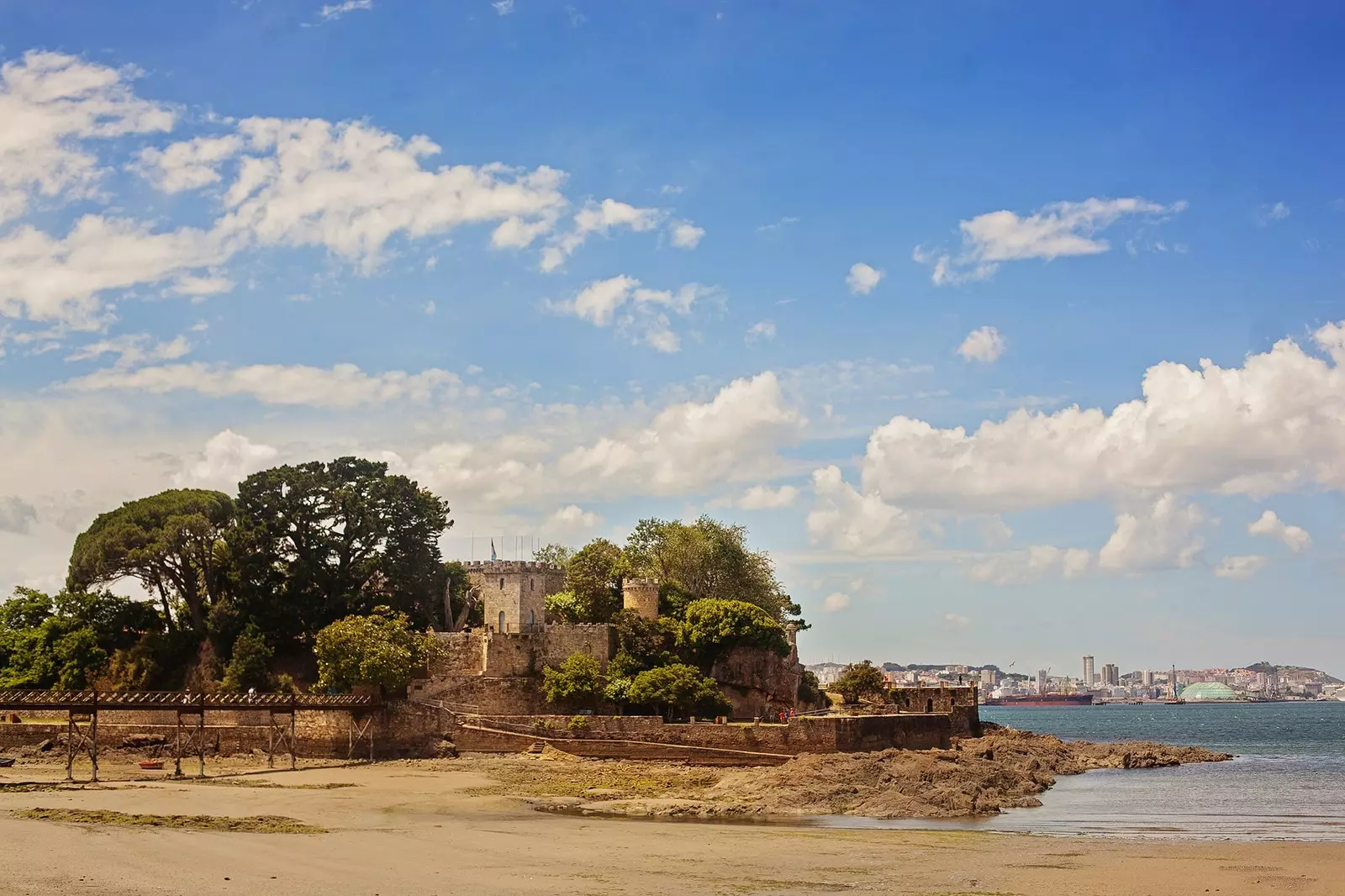
Little is said about Galicia and its castles
Little is said about Galicia It is also a land of ** medieval castles .** And of riots and stories that taste of blood, mud, fermented beer and smoked meat. I discovered that world when I was eight years old.
My sister, who is exactly ten years older than me, would take me with her friends on car trips that she would take at the beginning of university. The first memory was Moche's castle , sitting on the edges of the defense walls, with their legs dangling towards the inner courtyard, watching the sunset.
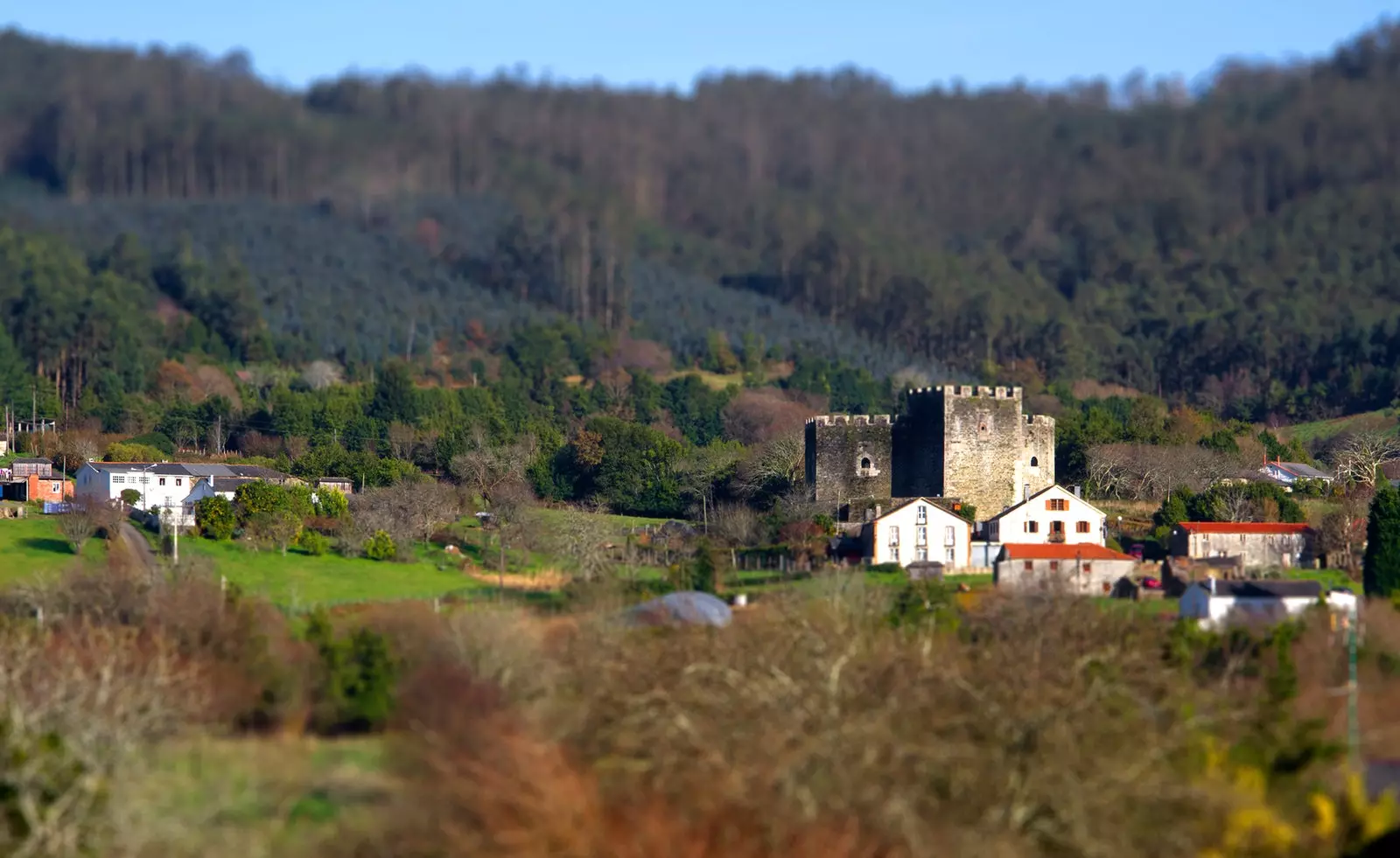
Moeche and his castle
Perhaps those trips to the past helped in something, it helped me to imagine. So there goes a tribute to one of the lesser-known stories of the barbaric Gallic villages that can make you enjoy like a child with a wooden sword and a plastic shield.
The Castle of Moche -14th century- is known for witnessing one of the bloodiest civil wars of the Middle Ages. It's in Ferrol and now it belongs to the House of Alba, but back in the day -back in the 15th century- It was the home of the Andrade, the high class of the time. Like many, they ended up not being clean wheat.
The Irmandiña Revolt it was an accumulation of bad harvests, hunger and embezzlement of the feudal lords that exhausted the patience of the peasantry. They ended up expelling Nuno Freire de Andrade , who left for peteneras to his castle of Pontedeume. The end is sad to cry because the revolt was defeated by the counterattack of the feudal troops, better prepared and with more weapons.
This event is remembered during the third week of August as Irmandiño Festival , with recreation of the assault included. It's a good way to enjoy the medieval atmosphere surrounded by stone walls, music, dancing and the smell of burning wood. Of the barbecues, of course.
Following Nuno's escape, the castle of Nogueirossa -Pontedeume, 13th century- is a must-see because it is in the same center of the Fragas del Eume. This natural enclave is a source of biodiversity like few others, collapsed from oaks and ferns.
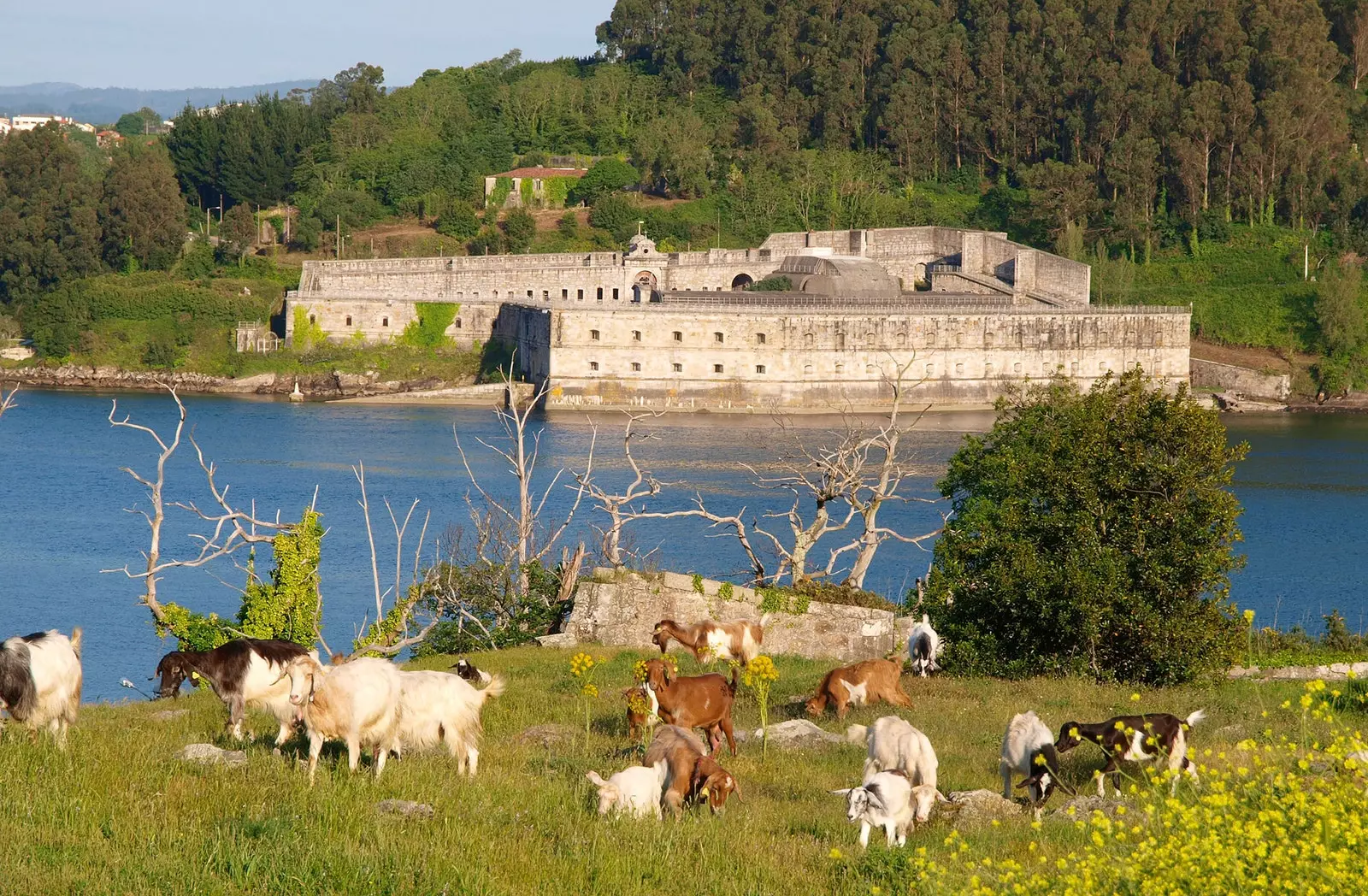
La Palma Castle
Located on the Mount Pena Laboreira, At 309 meters above sea level, this castle It was partially destroyed after the riots. Since 1994 it has been a Site of Cultural Interest and can be visited. Perfect as the final touch to a walk through the magical forest.
Very close to there is the defensive triad of the Ferrol estuary. Is about the castles of San Martín, San Felipe and La Palma -century XVI-. They were conceived as military maritime surveillance constructions. Only a few ruins remain of the former, although the views from the lighthouse are spectacular. The other two are still standing they can be visited.
The castle of La Palma is very well preserved compared to that of San Felipe, but in either of the two it is easy to imagine how observer of a battle against the English or the French. Because here there was also jarana. Both English and French tried to conquer the city and were rejected thanks to the defense of these three castles but the best known battle is that of Brión.
It was in 1800 and the English came with the face of wanting us. they called him 'The Ferrol Expedition' and the idea was destroy the Arsenal and ships.
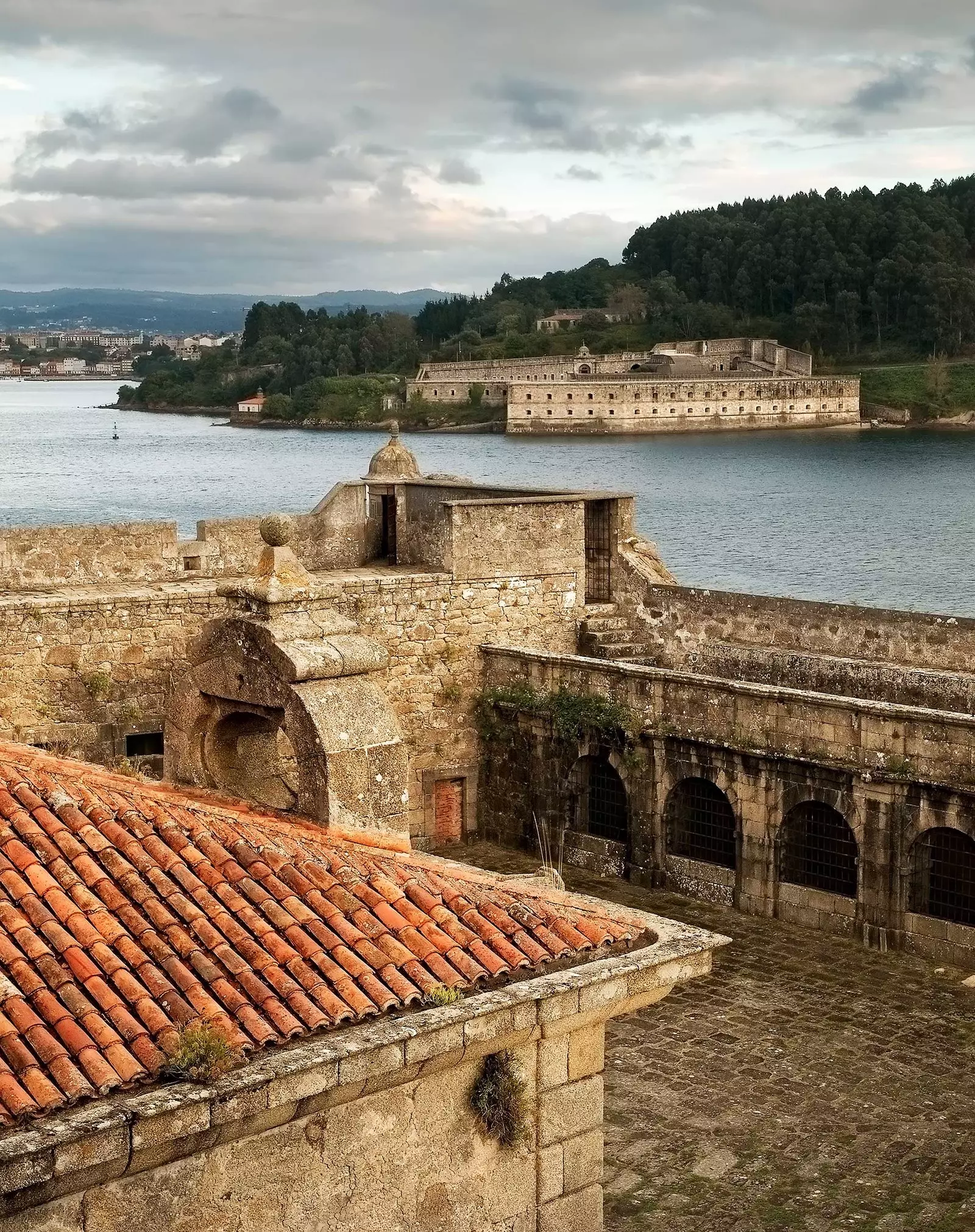
Interior of the castle of San Felipe with La Palma in the background
One hundred ships and about 15,000 men commanded by Rear Admiral Sir John Borlase Warren tried to invade the city by crossing the estuary on one side and the other and landing their troops by the beaches of Doniños and San Xurxo. They had to go home.
the field marshal Vincent Maria de Quesada and Army Lieutenant General Juan Joaquin Moreno, commander of the stationed fleet, gathered everything they had at hand: from gunboats to the same peasant militias. Two days. A butchery. It is said that even Napoleon celebrated it: "for the brave ferrolanos". Now that you know what happened, there is no excuse not to put yourself in the situation.
In A Coruna , from the 16th century there is another defensive triad. they form it the castles of San Antón, Santa Cruz and San Diego. The castle of San Diego is the only one that no longer exists, it was demolished in the 1960s as a result of the expansion of the commercial port.
The castle of San Antón today can be visited, since it is an archaeological museum. rose into what was a small islet very close to the bay, in which there was a hermitage dedicated to San Antón. The castle was attacked by pirates and corsairs and made known to a heroine who fought against a villain.
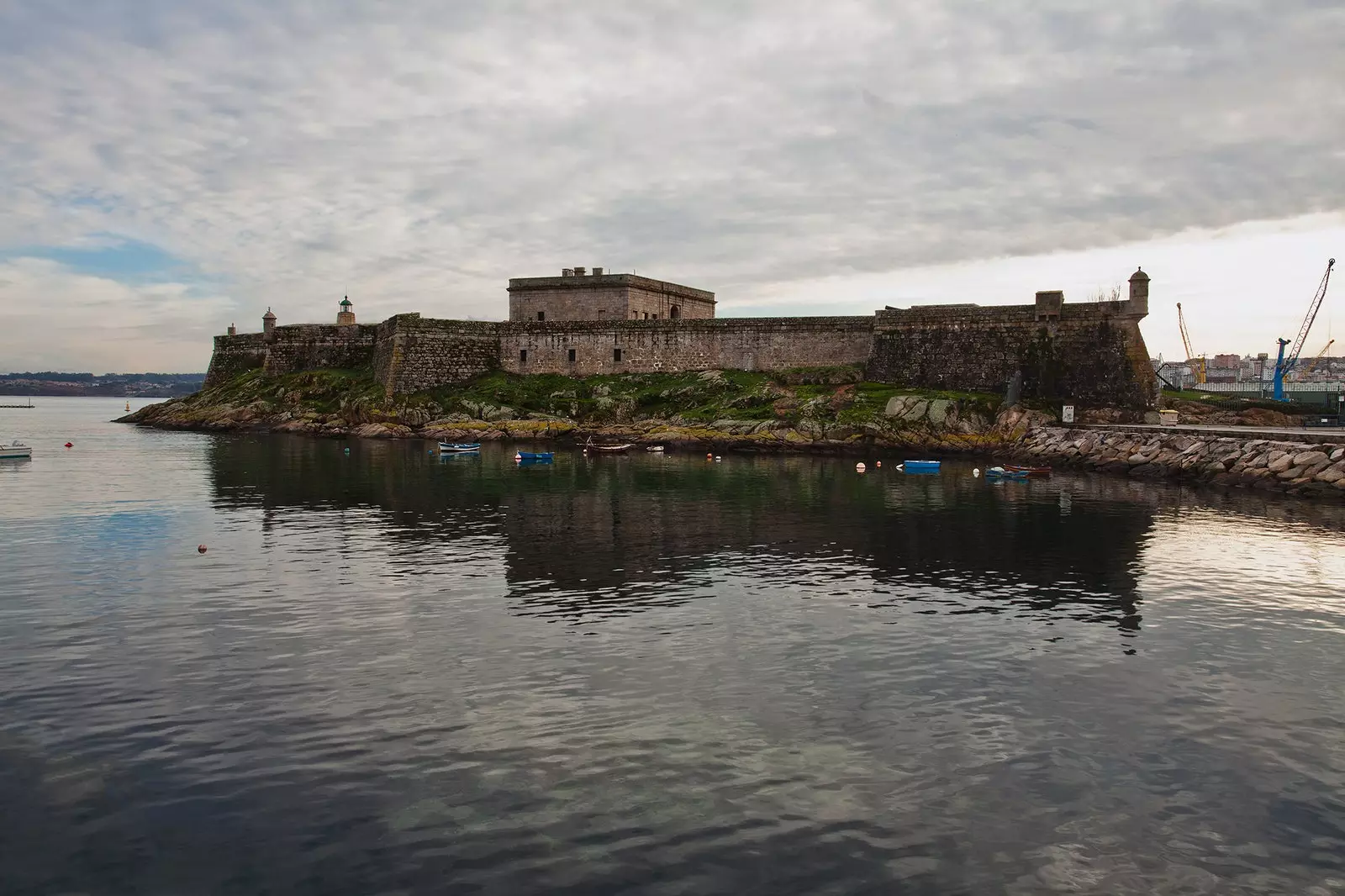
Castle of San Antón, in A Coruña
The most famous of the villains was Francis Drake: corsair, slave trader, explorer and English vice-admiral and the second to go around the world in a single expedition -the first was Juan Sebastián Elcano-. Here he became famous for attempt to invade the city together with General Sir John Norreys and get scalded. It was shortly after the Great and Happy Armada became known to the English as the Invincible Armada.
After the absolute failure the British decided to fight back Thinking we'd be crying in the corners They managed to disembark and do their thing until they reached the city walls, where a woman, María Mayor Fernández de la Cámara y Pita, or now known as María Pita, threw a pike in hand against an officer upon seeing her husband dead. Total, morale hit rock bottom and back home while the great María Pita put on her sunglasses with a 'thug life' pose.
The castle of Santa Cruz is in Oleiros, on an islet in the middle of the bay, a perfect enclave for a quiet weekend getaway. It became the vacation residence of the writer Emilia Pardo Bazán. After her death it was donated to the military, who made this castle a residence for military orphans. Today you can visit. It belongs to the town hall and it is common to see guided tours, exhibitions and conferences. It has a permanent collection of works and a library.
The vimianzo castle, or also known as Martelo Towers, -Vimianzo, 12th century- was built on the coast to control the trade routes of the North Sea, through which sardine trawlers and merchant ships sailed. Its year of construction is not known exactly, since remains of another previous tower have been found under the patio.
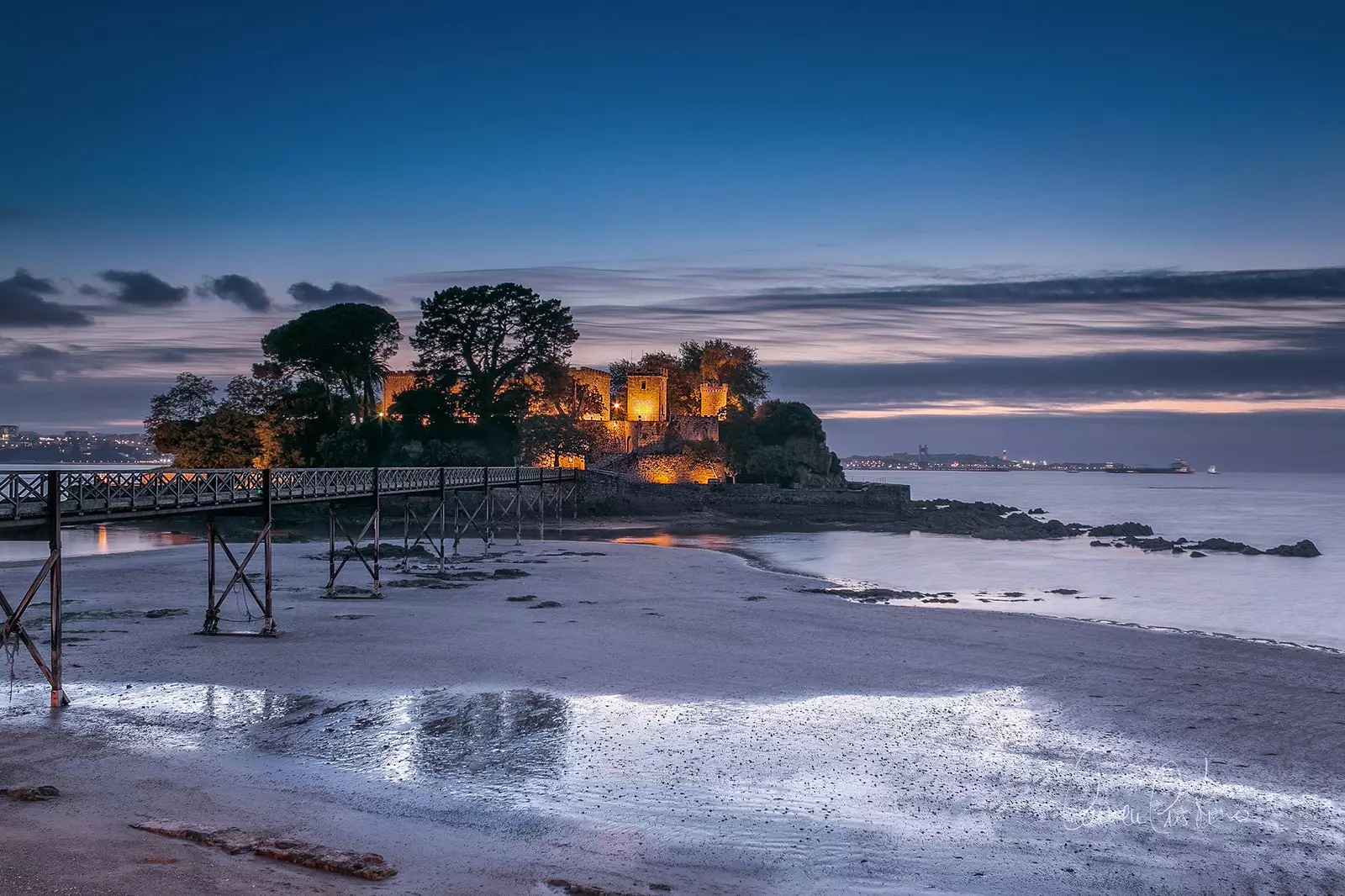
Castle of Santa Cruz, in A Coruña
Despite the many stories he has seen, it is in a very good state of conservation, since you can see the three towers and the homage tower surrounding the parade ground. They are preserved even from the tips of the battlements in the tower to the entrance gate or the moat.
It was destroyed in the irmandiña revolt and became the prison of an archbishop, Alonso II de Fonseca and Acevedo, that between one thing and another, he ended up messing it up so badly with his uncle, Alonso I, that in an exchange of venues he invented that of “The one who went to Seville lost his chair”. In short, they changed cities because one of them needed to calm things down in Galicia and, when he wanted to return, the other replied that nanai, that he liked her Seville and that he did not intend to leave.
The Vimianzo castle belongs to the Diputación de A Coruña, it can be visited, since It is an interpretation center of the Costa da Morte, and also includes a sample of popular crafts.
Another of the castles destroyed by the irmandiños was the castle of A Rocha Forte -Conxo, XIII century-. It's a little further inside near Santiago de Compostela, on a promontory 185 meters above sea level.
Today It is an archaeological site and can be visited. Remains of a Bronze Age fort have been found, and as a castle it witnessed bloody combats and especially bloody historical events in the 14th and 15th centuries.
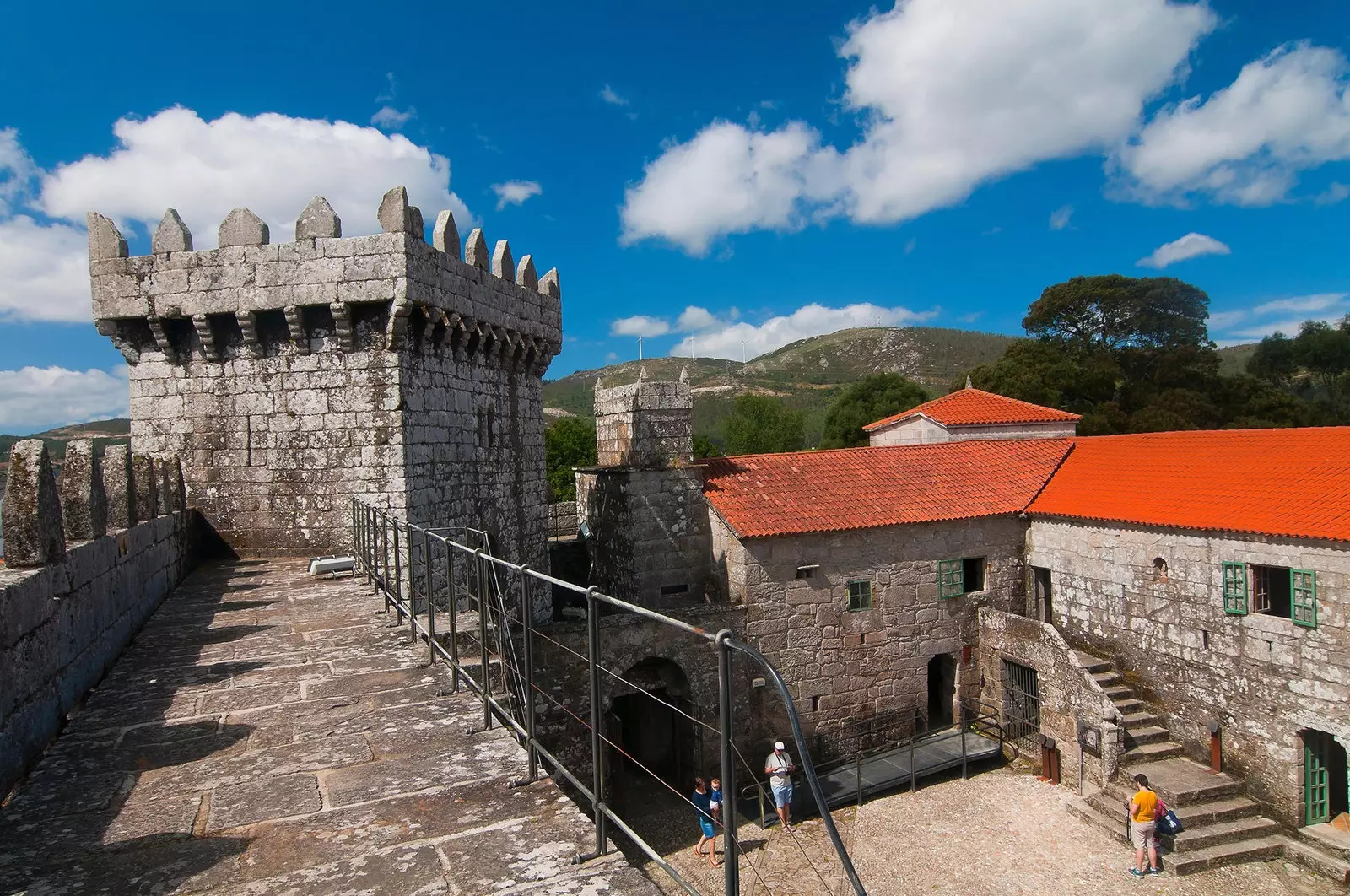
Castle of Vimianzo
As if they were going to do the Game of Thrones script, this castle already had its red wedding. It was September 13, 1320 and is known as the Day of Wrath. Some trouble against the archbishop and the subsequent armed uprising led to the organization dinner with a glass for a bourgeois embassy that came to negotiate. In this the archbishop's soldiers close the doors of the castle and kill them all.
This castle is also known as castle of the churruchaos , a gang of thieves and murderers who operated under the protection of the archbishop. Legend has it that when the captain found out about this, he went for the archbishop to execute him and, immediately afterwards, he went to the castle to do the same with the members of the band. Years later, the castle experienced in its flesh the peasant revolts and was destroyed in 1467 , as it can be seen today.
The soutomaior castle , -Soutomaior, 12th century- is a few kilometers from Vigo and it is a good excuse to imagine yourself in another era. It is 119 meters above sea level, which allows the control of the entire valley of the Verdugo River, which flows into the cove of San Simón, in Arcade, where the best oysters in Galicia are eaten.
It is one of the best preserved and has a spectacular garden. More than 15,000 square meters of botanical garden with tree species of more than eight centuries of life and a collection of three hundred camellias of 22 different types.
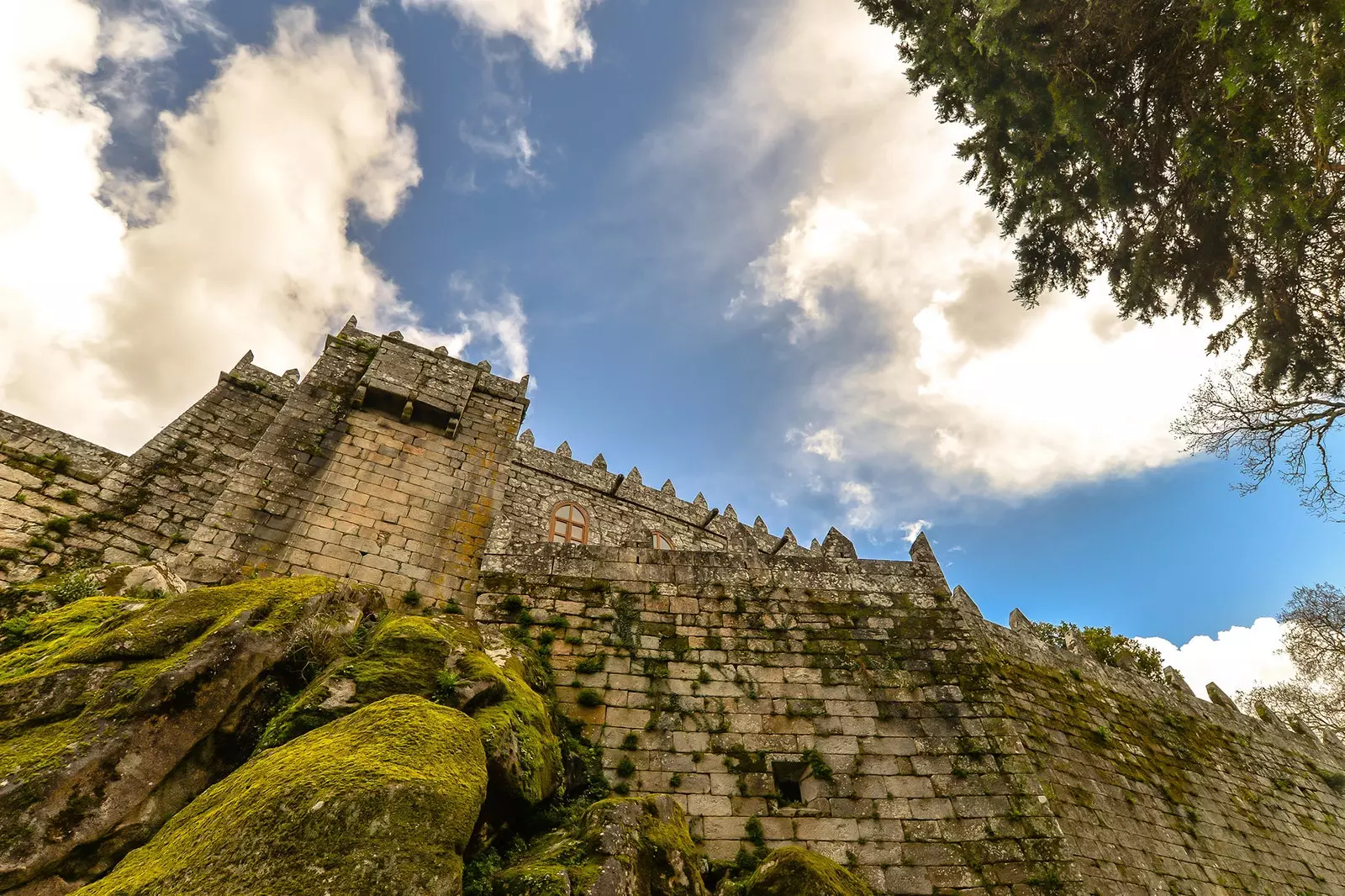
Soutomaior Castle
It had its high point in the fifteenth century being the owner Pedro Alvarez de Sotomayor , known as Peter Early. The castle witnessed revolts against the nobles and prison of the Bishop of Tui. I become the residence of Maria Vinyals in 1908, a precursor of suffragism and feminism in Galicia together with Emilia Pardo Bazán, who were friends of hers. Nowadays belongs to the Provincial Council of Pontevedra It is a museum and you can visit it.
The monterreal castle -Baiona, 12th century- is in the Monte Boi peninsula. Today is a fortress-parador with many stories. The most important: founded by the Romans, it was a treasure of the Visigoths, Muslims and Christians; it was the prison of Afonso Enríques, a Portuguese prince -in the Tower of the Prince, hence its name-; he witnessed innumerable contests and battles, among them that of Pedro Madruga, who did not rest even to eat, who conquered him by beating him; that It was the first point on the European continent to know that the New World existed, since in March 1493 it saw the arrival of the caravel La Pinta with one of the finch brothers on board, Martín Alonso Pinzón, a few days before Columbus did so in Lisbon; Y also resisted Francis Drake's attack . The fortress is open to the public throughout the year, and the parador is ideal for a weekend getaway.
The castle of Sobroso-Mondariz , XII century - was the place of confinement of Urraca I of León, known as La reckless, who escaped from the siege through a hidden passageway that allowed her to reach León. This castle was also the scene of battles and looting, such as those perpetrated by Almanzor in the times of Alfonso V, and also in the irmandiñas revolts, which almost ended up destroying it. Pedro Madruga rebuilt it.
It is currently a museum of interpretation and conservation of the municipality of Ponteareas: there are exhibitions and conferences on traditional trades such as those of the zoquero or basket maker or the making of linen, and a regional costume collection from the southern area of the province of Pontevedra.
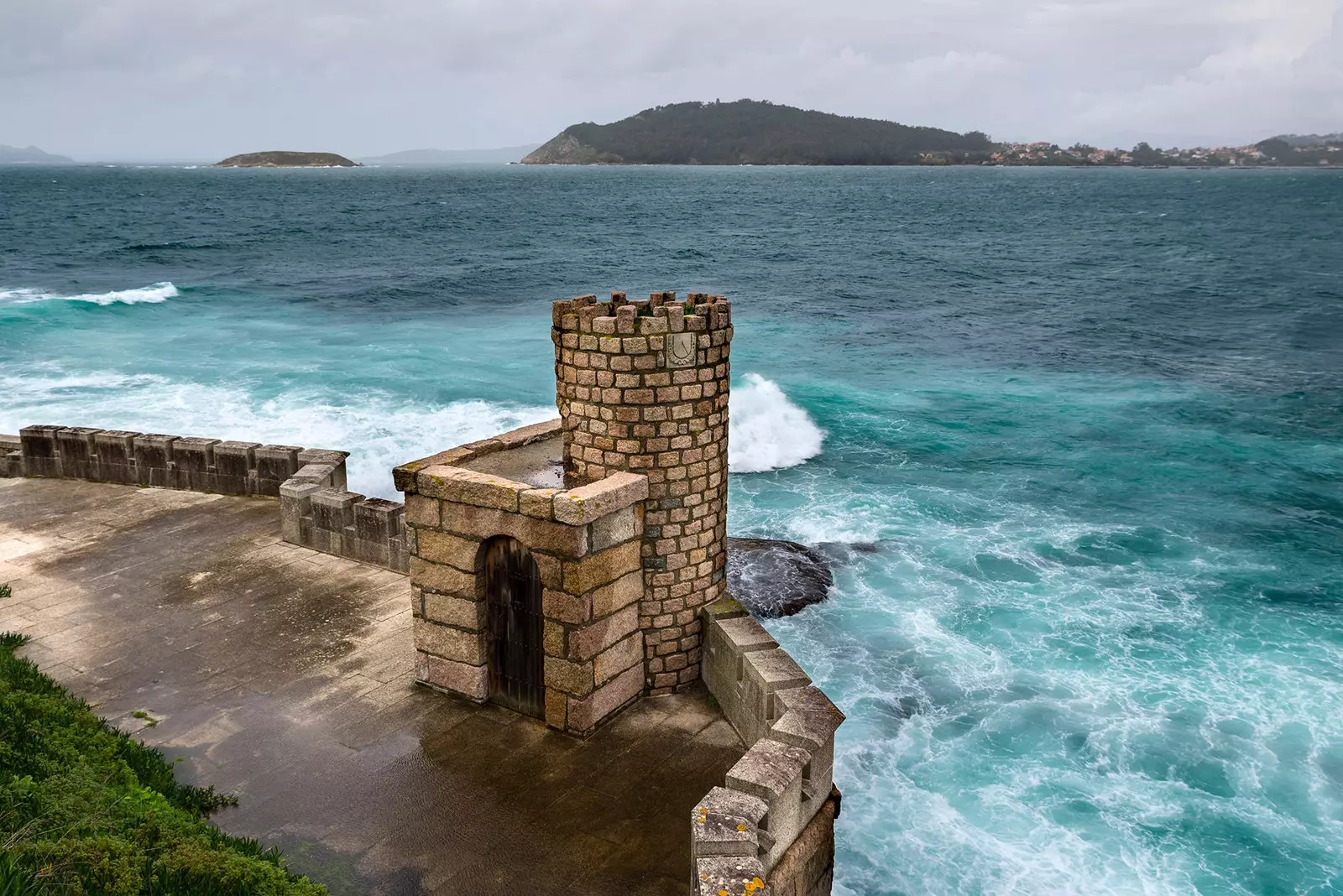
Monterreal Castle, in Baiona
Two steps from Portugal is one of the palatial wonders that have remained almost unchanged until today. The castle of Monterrei-Verin , 12th century - it is a palace and also a fortress of which there are already documents in the 10th century that speak of the settlement, built on a hill to keep an eye on the Portuguese neighbor.
It is an amazing complex. It was declared a National Monument and an Asset of Cultural Interest. From its position you can see the entire valley and within its walls you will feel like a nobleman. It was the place where the first incunabulum in Galicia was printed and the home of countless nobles. It preserves the old hospital for pilgrims, the church of Santa María de Gracia, the house of the Counts and the castle, all walled and intact. Currently you can visit and the palace is a parador.
The castro caldelas castle -Castro Caldelas, XIV century- was built by the Counts of Lemos to defend the lands, although there remains of settlements from 4,500 years ago. It had its warlike episode during the irmandiñas revolts.
When these failed, the Count of Lemos forced the population to rebuild the castle. Such was the anger of the population that denounced him before the Court of Valladolid that gave them the reason. It took 100 years to start the reconstruction.
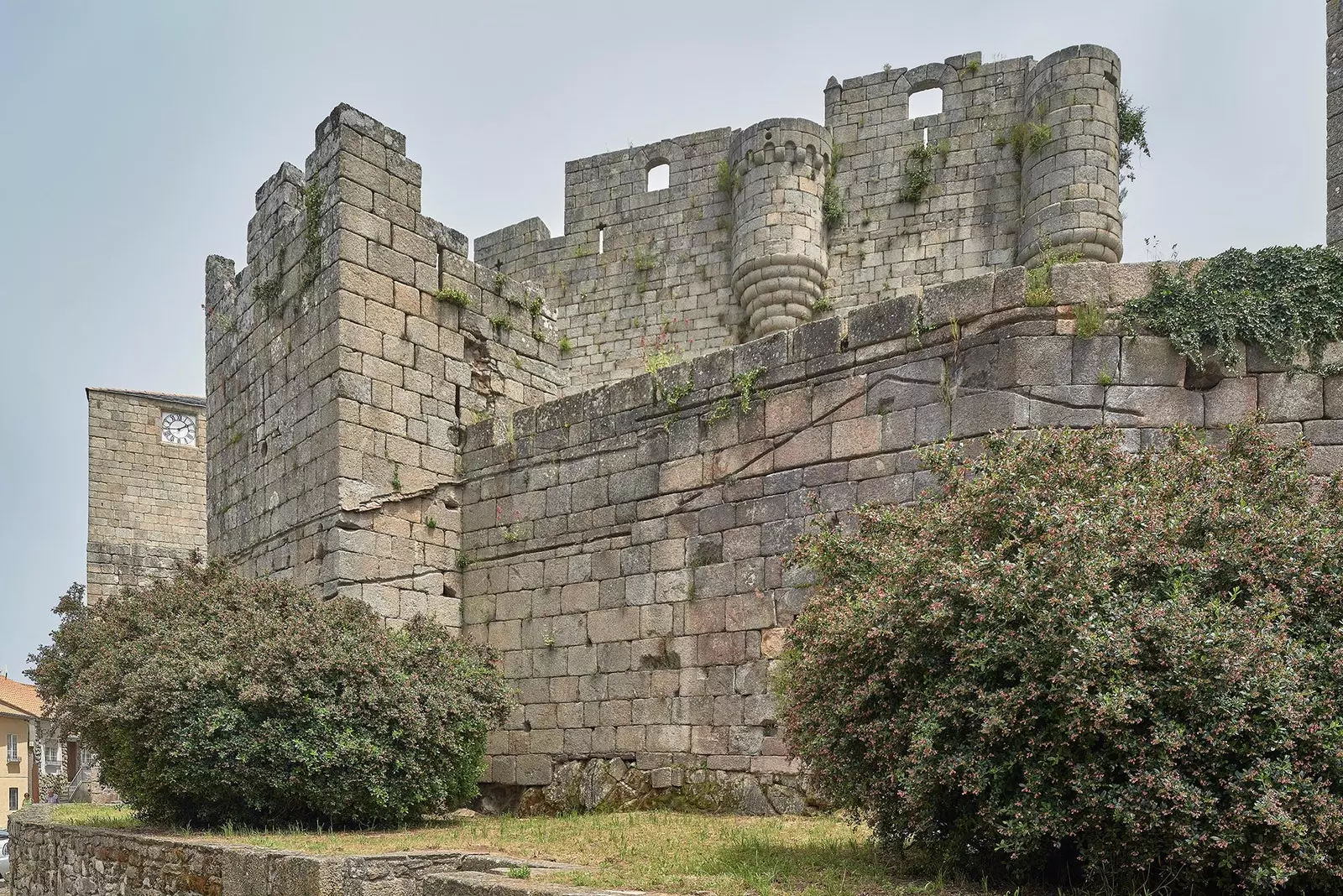
Castle of Castro Caldelas
Raised on a promontory, the top of Vila , from which you can see the entire area, this castle is very well preserved -it is declared Historic-Artistic Monument in 1949- and currently It is an archaeological and ethnographic museum which has to its credit objects found while it was being restored: spinning wheels, ceramic looms or coins. For that alone, and for feeling like a nobleman, it is worth visiting.
The castle of saint vincent -Monforte de Lemos, 10th century- was born raised on the Castro Dactonio , capital of the pre-Roman town of the Lemavos, and next to the Benedictine monastery of San Vicente del Pino, of the 10th century, giving rise to what we know today as Monforte de Lemos. Built on a hill, the mount of San Vicente, and conceived as a strategic fortress that dominated the entire area, Its construction began in the 10th century and it was renovated until the 16th century.
It also has its legend, known as The crown of fire. According to the story, there was a secret passageway between the castle and the church of San Vicente del Pino. In the, the abbot and the daughter of the count of Lemos had an affair with secret kisses. Upon the count's return, he invites him to a gargantuan papatory. At dessert one of the servants places the abbot a red-hot iron crown and kills him.
It suffered irmandiñas revolts and a terrible fire in 1672. The restoration of the 30-meter tower allows it to be visited today, and the convent is today a parador that must be visited.
The castle of Maceda -Maceda, 11th century- is a very well preserved complex that was first a fortress and over the years it was adapted to palatial life. Alfonso X of Castile came to live within its walls . Another famous of the time was born there. Joâo da Nova he was sent as a young man to Portugal for the riots, and in 1496 he became mayor of Lisbon. After that he became an explorer and came to discover the island of Saint Helena (that island that was Napoleon's prison) and the Ascension Islands. Today it can be visited since in the 20th century it was restored and it is a hotel.
The pambre castle -Palas de Rei, XIV century- is one of the few complexes that survived the irmandiñas revolts since He came to have an army of 3,500 soldiers and resisted all kinds of attacks, becoming an agricultural reference of the time. Many families of nobles and not so nobles are related to this castle, such as the already mentioned Churruchaos.
It's in the french road, on a steep cliff on the banks of the Pambre River, it was restored three years ago and is perfect for a weekend visit.
In the heart of the Ancares there is also a castle. Its about castle of Doiras-Cervantes , XV century-, and is in the middle of the mountain, 748 meters above sea level. It's a treat for the eyes the views will not leave you indifferent, perfect for an afternoon of hiking.
There is much to discover because Very little is known about this impregnable castle. It was a fifteenth-century fortress, built on a Celtic fort and rebuilt after the irmandiñas revolts. It is impressive to see the eight-meter walls and the keep and its 14-meter height.
Between its walls you can hear the legend that is attributed to this fortification. This is the doe woman. aldar, daughter of Froiaz, she was going to marry her beloved Aras , but before the wedding she disappeared into the bush. After a fruitless search, her brother Egas hunted a white deer. As he was very heavy, he cut off his leg to show it in front of everyone and thus demonstrate that he was responsible for the animal. But what Egas took out of the bag was not a deer leg, but a woman's arm, with a ring in her hand . When they went to look for the animal, they found Aldara's mutilated body. Witch stuff.
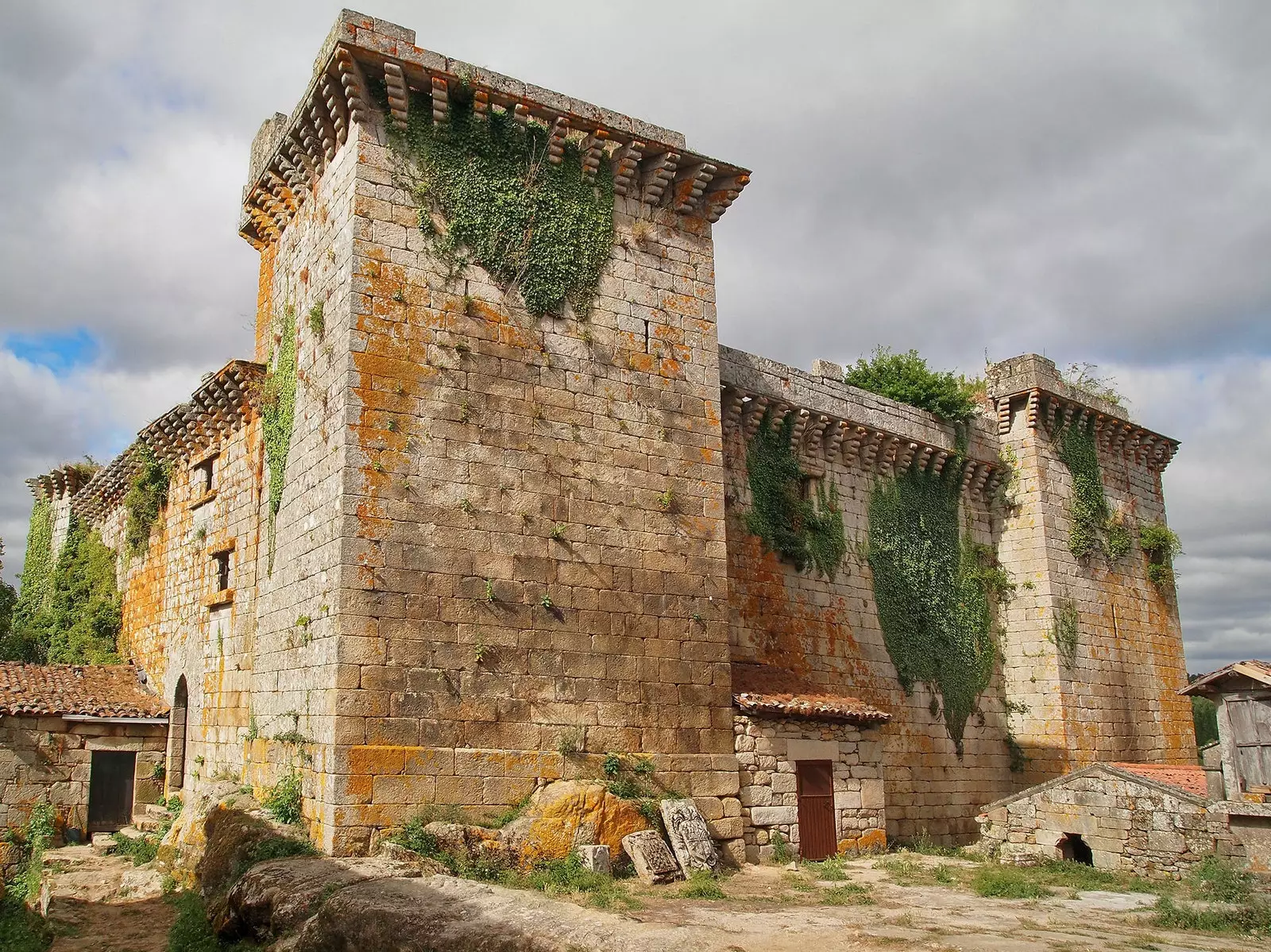
Pambre Castle, in Palas del Rey
